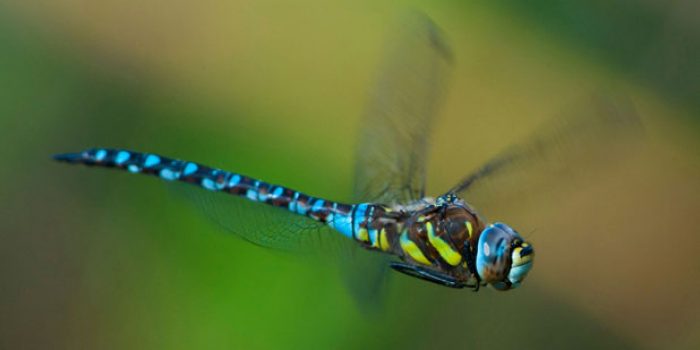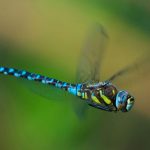Experts offer tips on how to get your gardening buzzing with these colourful insects.
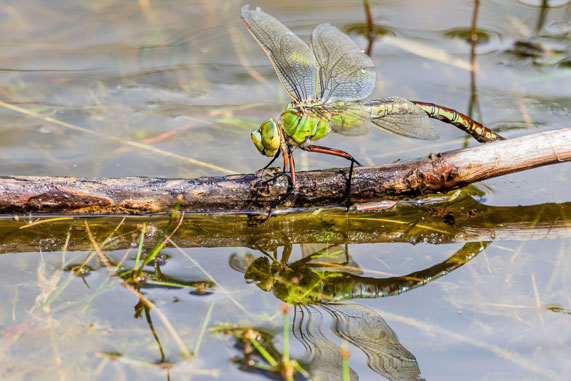
So often during the summer, we see iridescent dragonflies and damselflies flitting between plants and water on river paths or lakeside walks, but how do we tempt them into our gardens?
Modern-day development, drainage and pollution have meant numbers have fallen dramatically, along with the reduction in ponds over the 20th century. Ponds are particularly important as dragonflies spend most of their lives as aquatic larvae, so need water to survive.
Ruary Mackenzie Dodds and Kari de Koenigswarter, authors of The Dragonfly-Friendly Gardener, who advised Exbury Gardens in the New Forest on its new dragonfly area, have the following tips on how to attract these colourful creatures into your outdoor space:
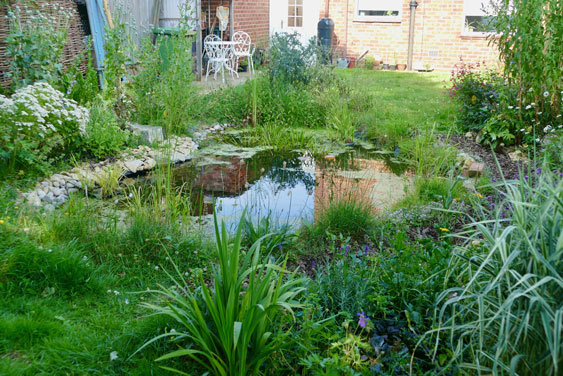
1. Make a splash with a new pond
Dragonflies need ponds as they spend around two years – the majority of their lives – as larvae in the water. You need to consider safety if you are installing a pond, particularly if you have young children, as well as location, as ponds need maximum sunshine and are best built away from trees.

2. Use rainwater
You’ll need easy access to good quality water to fill your new pond as dragonflies are sensitive bio-indicators. Mains water contains nutrients that can cause algal blooms and weed growth, so ideally fill any pond with rainwater run-off via a hose or water butt. It is best to invest in a pump with a filter if you want running water but keep it gentle as water lilies are unhappy with too fast a flow.
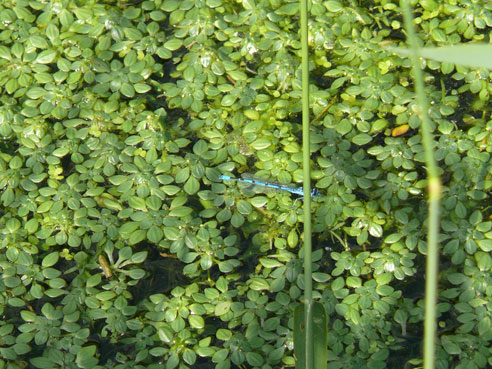
3. Don’t worry about size
The ideal pond size for dragonflies is 14 square metres but 3.75 square metres will do, and even a tiny raised pond on a balcony will work. Dragonflies prefer gentle gradient sides – some shallow water will be warmer and encourage larvae to emerge sooner.
A rough, slightly wiggly oval shape for your pond usually works but there is no fixed rule. Work out how you are going to reach parts of your pond, if needed, and include places to sit with large stones and a bench.
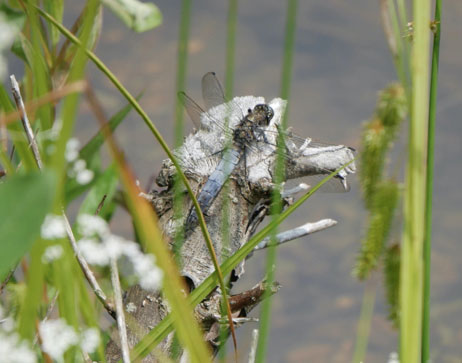
4. Think about construction
If creating your own pond from scratch, think about where you are going to put the soil. Once you’ve dug a hole, add a layer of sand beneath the pond liner for protection to avoid leaks.
Lots of preformed ponds are available online or at garden centres if you find this option easier. Fill slowly with water and then test with a pH kit to work out whether its alkaline or acidic – rainwater is typically slightly acidic.
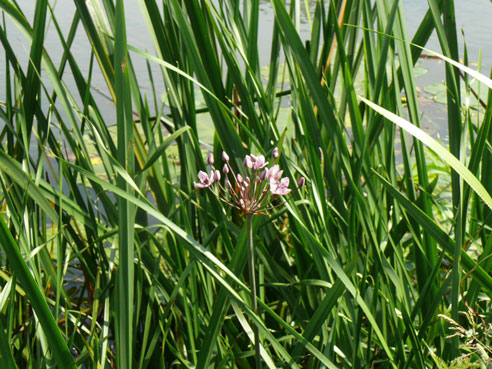
5. Right plant, right place
Some plants thrive in flowing water, others in still. Some like acidic conditions others alkaline, so pick plants that will suit your pond’s conditions. You’ll need aquatic baskets to hold your plants and you can adjust the height of these with clean bricks laid carefully on the liner.
Choose peat-free aquatic compost and source local native water plants if possible. Why not ask a friend if they will share some from their pond? But double check what you are taking is local and not non-native or invasive. Check out the RHS website (rhs.org) for a list of suppliers.
In the water – water starwort, hornwort, spiked water milfoil.
In/on the water – greater pondweed, water lily (fringed, white and yellow), water mint, water forget-me-not.
Around the edges – flowering rush, yellow flag iris, bog bean, marsh marigold, Branched Bur-Reed.
Close to the pond – ox-eye daisy, primula, loosestrife, hemp agrimony.
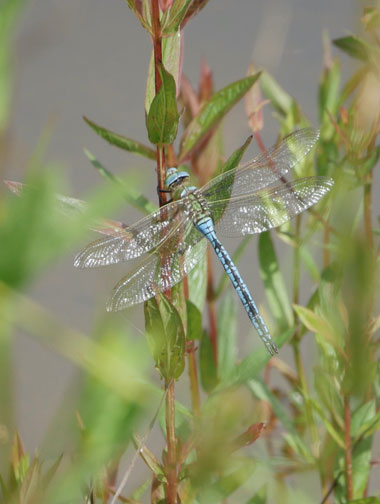
6. Keep pond plants under control
Dragonflies like clear water, not overly cluttered with plants, so make sure you keep the most vigorous plants under control. Keep the water level up, particularly in warm weather. When leaves start to fall in autumn, try to keep as many as possible from falling into the pond.
7. Look out for different types of dragonfly
Emperor dragonfly – Britain’s bulkiest dragonfly, males are sky blue and females green with a central dark line.
Migrant hawker – small with paired spots along the abdomen, males are dark with blue spots and yellow flecks and females are brown with yellow spots.
Common darter – can be found well into November, males are dull to bright orange-red, and females are ochre becoming duller/reddish with age.
Black–tailed skimmer – medium-sized with a tapering abdomen, males have a blue body darkening to the rear and females have yellow with dark ladder pattern on the abdomen
Four-spotted chaser – uniformly brown dragonfly, active in late spring and summer, males and females look similar with two obvious dark spots on each wing.
Exbury Gardens in the New Forest has just been designated a Dragonfly Hotspot by the British Dragonfly Society. Visitors can learn about the insects and get close to wildlife on floating pontoons over a new dragonfly pond. For details visit exbury.co.uk.

